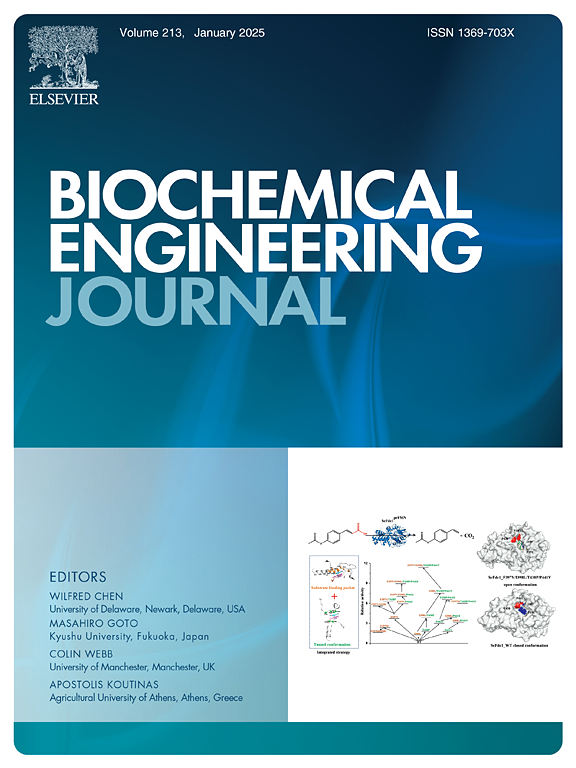一种廉价的微藻培养实时最优控制装置:模拟和实验结果
IF 3.7
3区 生物学
Q2 BIOTECHNOLOGY & APPLIED MICROBIOLOGY
引用次数: 0
摘要
无模型极值搜索(ES)由于避免了费时费力地建立过程模型并识别其参数,成为一种流行的动态优化策略。本研究探讨了利用最小投资开发微藻连续培养ES控制策略的可能性,特别是利用简单的“内部”RGB传感器进行生物量浓度检测。除了对稀释率的作用外,还考虑了入射光的变化,并且通过牛顿方法解决了相对于该输入的生产率的较低灵敏度,其中二阶信息是从ES方案中包含的自适应Hammerstein模型推断出来的。通过仿真和实验验证了该策略的有效性。初始化是确保快速收敛的关键因素,并且为了确保鲁棒性,必须施加Hessian估计的边界。本文章由计算机程序翻译,如有差异,请以英文原文为准。
A cheap real-time optimal control setup for microalgae cultures: Simulation and experimental results
Model-free extremum seeking (ES) has become a popular dynamic optimization strategy as it avoids the time- and resource-consuming task of developing a process model and identifying its parameters. This study explores the possibility of developing an ES control strategy for continuous cultures of micro-algae using minimum investment and, in particular, exploiting a simple “in-house” RGB sensor for biomass concentration. Besides the action on the dilution rate, variation in the incident light is also considered, and the lower sensitivity of the productivity with respect to this input is tackled by a Newton approach where the second-order information is inferred from an adaptive Hammerstein model included in the ES scheme. The setup is validated in simulation and experimental studies, demonstrating the strategy’s good performance. Initialization is a critical factor to ensure fast convergence, and, to ensure robustness, bounds on the Hessian estimates have to be imposed.
求助全文
通过发布文献求助,成功后即可免费获取论文全文。
去求助
来源期刊

Biochemical Engineering Journal
工程技术-工程:化工
CiteScore
7.10
自引率
5.10%
发文量
380
审稿时长
34 days
期刊介绍:
The Biochemical Engineering Journal aims to promote progress in the crucial chemical engineering aspects of the development of biological processes associated with everything from raw materials preparation to product recovery relevant to industries as diverse as medical/healthcare, industrial biotechnology, and environmental biotechnology.
The Journal welcomes full length original research papers, short communications, and review papers* in the following research fields:
Biocatalysis (enzyme or microbial) and biotransformations, including immobilized biocatalyst preparation and kinetics
Biosensors and Biodevices including biofabrication and novel fuel cell development
Bioseparations including scale-up and protein refolding/renaturation
Environmental Bioengineering including bioconversion, bioremediation, and microbial fuel cells
Bioreactor Systems including characterization, optimization and scale-up
Bioresources and Biorefinery Engineering including biomass conversion, biofuels, bioenergy, and optimization
Industrial Biotechnology including specialty chemicals, platform chemicals and neutraceuticals
Biomaterials and Tissue Engineering including bioartificial organs, cell encapsulation, and controlled release
Cell Culture Engineering (plant, animal or insect cells) including viral vectors, monoclonal antibodies, recombinant proteins, vaccines, and secondary metabolites
Cell Therapies and Stem Cells including pluripotent, mesenchymal and hematopoietic stem cells; immunotherapies; tissue-specific differentiation; and cryopreservation
Metabolic Engineering, Systems and Synthetic Biology including OMICS, bioinformatics, in silico biology, and metabolic flux analysis
Protein Engineering including enzyme engineering and directed evolution.
 求助内容:
求助内容: 应助结果提醒方式:
应助结果提醒方式:


